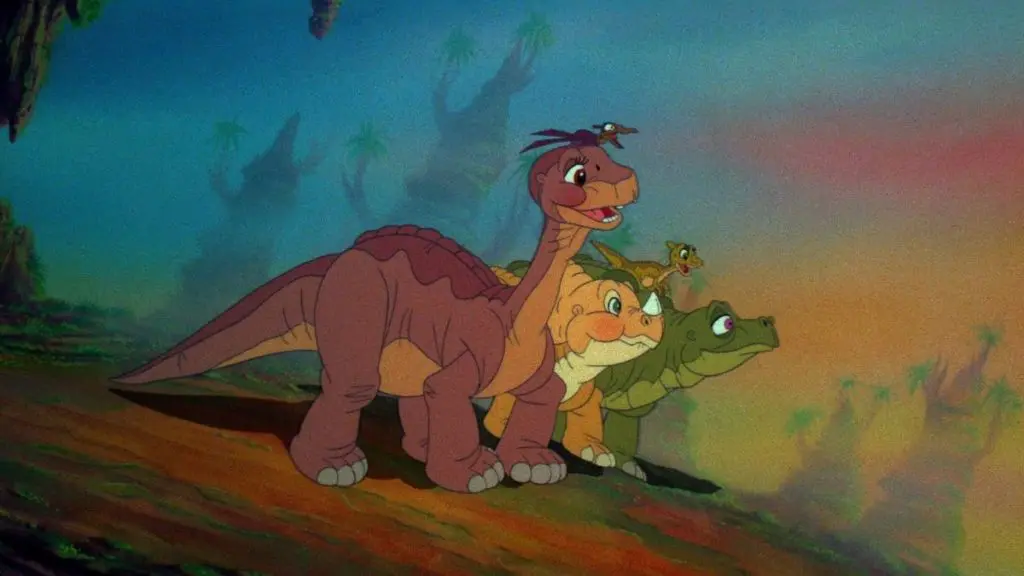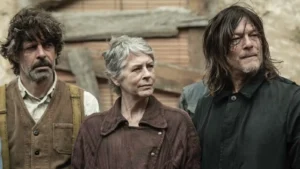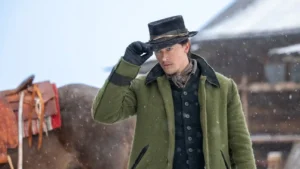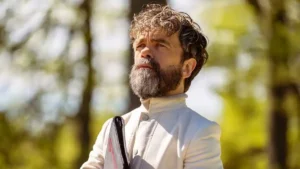Summary
Animation vet Don Bluth puts audiences through the emotional ringer with magical results in this prehistoric journey.
Once again, we’ve come to that special time of year that brings people together. Families and friends meet up; food is shared, and a grand time is had. Like with most holidays, many films and TV shows have paid homage to Thanksgiving. However, few in recent memory encapsulate the meaning of such an occasion as poignantly as the 1988 animated feature, The Land Before Time. Though technically not a Thanksgiving film, it is about family and coming together in spite of our differences. In that sense, it could not be more appropriate.
Taking place in prehistoric times, the story revolves around a young Apatosaurus named Littlefoot. Born into a barren wasteland with barely any food or water, he is forced to embark on a long journey of survival with his mother and grandparents. Their destination is a mysterious place known as the Great Valley, which is supposedly an herbivore sanctuary with all the plants they can eat. Unfortunately, perilous circumstances separate Littlefoot from his family, and he must now make the trek through the unknown without his mother’s protection. Along the way, however, he comes across other young hatchlings who were left behind. These include Ducky the Parasaurolophus, Petrie the Pteranodon, Spike the mute Stegosaurus, and Cera the Triceratops. To make it to the Great Valley, this mismatched herd must learn to work together and become stronger as a whole. If they don’t, then they could very well become something else’s meal.
As you might have guessed from the premise, this tale is not for the faint of heart. Most of director Don Bluth’s iconic works, despite being family flicks, are not afraid to dial up the depression, and The Land Before Time is no exception. The tone here can get notably grim and heart-wrenching at times, to the point where you may be balling your eyes out. However, this somber atmosphere feels appropriate given the subject matter. The movie does not sugarcoat the concepts of loss and loneliness that it delves into, instead portraying them in a truthfully uncomfortable light. It’s as if the world has come crashing down because, for Littlefoot, it has. Such an approach makes the eventual triumph all the more rewarding; you as the viewer feel like you’ve earned that happy ending as much as the characters have.
The characters themselves are very well-drawn, both literally and in terms of how they’re developed. They all have their own distinctively endearing qualities and vices. These personalities naturally contrast with each other, but this never comes at the cost of their chemistry. Rather, the variety of species comes with a variety of viewpoints. Each of them has his or her own fears and insecurities, and the fresh perspectives of the other characters help him or her to overcome those fears. This process is organic in its execution and easily digestible for audiences of all ages without being condescending. Moreover, it smoothly and effectively emphasizes the themes of growing emotional maturity, looking past surface-level differences, and forming lifelong fellowships.
Of course, it helps that the voice performances are so accomplished, which is especially admirable since several of the principal actors are kids. Gabriel Damon has the toughest job as Littlefoot. As the main character, he has to portray the greatest range and nuance in emotion. Thankfully, he meets the challenge and convincingly conveys every mood that the little hero goes through, from youthful naïveté to hopeless despair to solemn resolve. There is a consistent pathos to his performance; he comes across as someone desperately trying to keep everyone pressing on even though he himself wants to give up. This reluctant and sometimes sorrowful determination would be tough for an adult to pull off, particularly when moments of levity and childlike enjoyment are mixed in, but Damon makes it all seem natural, enabling us to easily identify with him.
That’s one of the most significant strengths of the voice acting: it’s like listening to real children, offering audiences a gateway of relatability into this exotic world. Judith Barsi is wonderfully spirited as Ducky, her innocent optimism lighting up the screen whenever she’s around. Will Ryan brings a manic energy to Petrie, his neurotic speech offering some welcome levity without ever drifting into the realm of annoyance. Lastly, Candace Hutson’s aggressive arrogance makes Cera an appropriately prideful counterpoint to Littlefoot, akin to that kid in class who brags about being perfect at everything.
While the young protagonists are undoubtedly the stars, the few adult voices here are also effective, lending The Land Before Time a surprising amount of gravitas considering their limited screen time. First and foremost, Helen Shaver effortlessly captures the maternal tenderness of Littlefoot’s mother, her every line carrying such wisdom and warmth that the atmosphere just feels safe in her presence. Secondly, Pat Hingle brings a suitably ancient yet timeless quality to the table as the film’s narrator. His weathered tone and reverent delivery combine effectively to sell the significance of the story, but he also mixes in faint hints of bemusement to prevent the movie from steering too far into melodrama. The end result is reminiscent of a kindly grandfather sharing the story with his grandchildren, similar to Peter Falk reading The Princess Bride to a captivated Fred Savage.
In spite of how well it’s told, however, the tale would not be as potent if it didn’t also excel on a technical level. Bluth’s history with animated films definitely shows here. In addition to being exceedingly fluid, the animation is meticulously detailed. Never do we come across a locale without movement, even if that movement comes from something as seemingly insignificant as rippling water. What’s more is that the camera angles and harsh color scheme make these environments look desolate and menacing, as if no place is truly safe. All of these elements work brilliantly in tandem to bring this exotic and unforgiving world to life.
The same care and attention were paid to the inhabitants. Not only can we see even the subtlest expressions and muscular shifts in the characters, but the animals themselves have a palpable weight to them. By using tricks like varying speed, playing with perspectives, and manipulating shadows, the filmmakers give the dinosaurs a tangibility that puts most 3-D animation and CGI to shame. Even without a side-by-side comparison, the audience has absolutely no problem differentiating the big dinosaurs from the smaller ones.
All of this is given further majesty and poignancy by James Horner’s magnificent musical score, which perfectly complements the childlike wonder, foreboding peril, tragic sense of loss, and overwhelming happiness that comprise the tale. In addition to setting the right mood for each scene, these tracks manage to be memorable and thematic to a surprising degree. The filmmakers could have simply opted for a handful of bouncy tunes to keep the kids happy, but much like his work in the American Tail series, Horner gives this world a distinctive musical identity that’s captivating in its fairy tale intrigue and infectious in its earnestness.
Unfortunately, the film falters somewhat in a couple of key areas. While the pacing remains steady and the storytelling stays smooth throughout, the third act feels slightly truncated. The climax seems to come without much anticipation, as if the writers suddenly said, “Now is the right time for the final struggle.” As a result, the turning points in certain character arcs aren’t quite as fleshed out as they could have been. Granted, these issues are far from jarring and likely won’t even register to those who aren’t looking for them, but they do undermine the organic flow of the narrative up to that point.
Thankfully, though, the movie regains its footing by the end, concluding the journey on an immensely satisfying note. It’s simple and predictable, sure, but that’s no bad thing as long as the destination is still rewarding. All in all, The Land Before Time cements its place as an animated classic for all ages. For as bleak as it gets at times, the endearing characters, vibrant animation, sublime score, well-realized setting, affecting story, and ultimately uplifting messages make the overall experience worthwhile.




